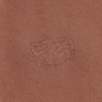One of the most overlooked aspects of practicing any instrument is what I would call micro practicing, or isolating a small passage of a musical piece or technique that may contain a challenging element. This challenging element is what we focus on when we micro-practice. The entire solo, riff, lick, or composition is not repeated over and over again - only the area that may contain whatever it is that we find challenging - and thus helps us to perform at our optimum level.
Why use Micro practicing? plain and simple: it saves you time and keeps you focused on the real issue that is causing you to make mistakes or compromises your consistency. While I was attending the University at Buffalo studying classical guitar, Joanne Castellani (Castellani/Andriaccio Duo) had me do this technique at my lessons and it was very intensive. I walked out of those lessons energized and ready to study further. I did not internalize this idea of practicing on my own and soon found myself involved for hours on one piece of music never really feeling comfortable or confident that I could perform it without making "stupid" mistakes. As I found out later, these mistakes were not "stupid" but were from a weakness in an element in my playing like a slide, hand shift, placing capo with the left hand, synchronization of the both the left and right hands. It was not all these issues at once but only one or two at a time! At my lessons Joanne made me focus on just one or two elements and that was the whole hour lesson. I would remember her saying, "Work on this shift here... good now do it again, and again, now 10 times without making a mistake and if you do, start over." At times I may have thought this was a form of cruel torture but I still was not understanding the concept. Now many years later I have been using this type of practicing and seeing huge results.
To apply the idea of Micro practice is very simple. Take anything on your instrument that you have been working on and play through it completely from beginning to end and note the areas that you were stumbling, fumbling all over the place. Note any weak areas or even a feeling of a lack of confidence. Now go back to those areas and take your metronome out (I know everyone has one and should use it all the time!) and set it to 40 or 45. Painfully slow right! Good! Take each area and, in time, loop your trouble spots paying close attention to what each hand is doing. With the metronome this slow your brain has a chance to fully map what each hand is doing and in essence you give yourself a chance to play it in time and learn it the correct way. Repeat each area 10 times, perfectly (If not then start over!) and then move the metronome up a notch or two and repeat the process. Once the neuromuscular pathway is strengthened, this area is no longer a weakness, you build your confidence, learn faster and become a better player in less time. Even if you practiced for only 15 minutes to a half hour a day, you would see faster results than if you were to try and force yourself to play from beginning to end and hope that the mistakes will just go away.
So keep practicing and I wish you well on your road to excellence with whatever instrument it is that you play.
Joe Pinnavaia is a professional musician, guitarist, instructor and composer from Buffalo, NY, USA.
His first solo release, "InVitro", under the project name Test Tube Rhino, is now available digitally from iTunes and Amazon from Steve Vai's Digital Nations.
